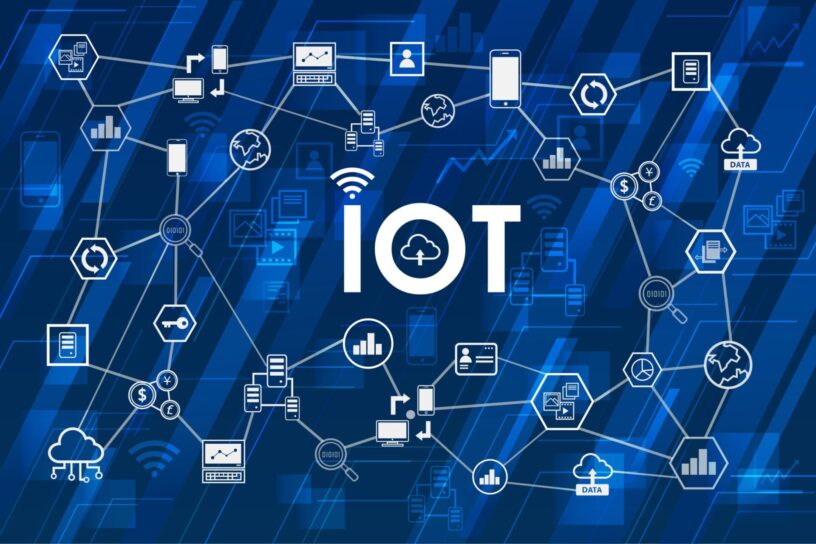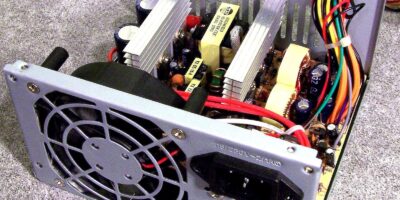Executive Summary
The Internet of Things (IoT) is revolutionizing the defense sector by enhancing operational efficiency, situational awareness, and decision-making capabilities. This report provides an in-depth analysis of the IoT in Defense market, including its current state, emerging trends, competitive landscape, and strategic opportunities. The findings suggest significant growth potential driven by advancements in technology, increasing defense budgets, and a rising emphasis on modern warfare strategies. Key recommendations for stakeholders include investing in secure IoT solutions, enhancing interoperability, and focusing on predictive analytics for proactive defense strategies.
Research Objectives
Goals:
- Assess the current market size and forecast growth potential for IoT in Defense.
- Identify key drivers and barriers influencing market dynamics.
- Analyze the competitive landscape and identify major players and their market strategies.
- Understand the application areas of IoT within the defense sector.
- Provide actionable insights for stakeholders to leverage IoT technologies effectively.
Questions:
- What is the market size and projected growth rate of IoT in the defense sector?
- What are the key drivers, challenges, and trends shaping the market?
- Who are the leading market players, and what are their strategies?
- How is IoT being applied in defense, and what are the benefits?
- What recommendations can be made for maximizing the potential of IoT in defense?
Scope: This report focuses on the global IoT in Defense market, encompassing various applications such as logistics, battlefield monitoring, fleet management, and soldier systems. It covers market trends, competitive analysis, and strategic recommendations from 2020 to 2030.
Methodology
Research Design: This study employs a mixed-methods approach, combining both qualitative and quantitative research. Quantitative data is derived from market reports, financial statements, and industry databases. Qualitative insights are gathered through expert interviews, case studies, and literature reviews.
Data Collection Methods:
- Primary Data: Surveys and interviews with industry experts, defense personnel, and technology providers.
- Secondary Data: Analysis of existing reports, market studies, and publicly available data from defense organizations and IoT companies.
Sampling: The sample includes major defense organizations, IoT technology providers, and subject matter experts from various regions, ensuring a diverse and representative data set.
Data Analysis:
- Quantitative Analysis: Statistical tools are used to project market growth and analyze trends.
- Qualitative Analysis: Content analysis is used to interpret insights from expert interviews and case studies.
Market Overview
Market Definition: IoT in Defense refers to the integration of IoT technologies into defense systems to enhance operational capabilities, efficiency, and decision-making processes. This includes interconnected devices and systems used for surveillance, logistics, fleet management, and soldier equipment, providing real-time data and analytics to support military operations.
Market Size: As of 2024, the global IoT in Defense market is valued at approximately USD 12.5 billion, with a compound annual growth rate (CAGR) of 15% projected over the next decade. The growth is driven by increased adoption of smart technologies and rising defense expenditures globally.
Market Growth: The market has shown robust growth, influenced by the rising need for advanced military systems and the increasing complexity of modern warfare. IoT solutions are enhancing capabilities in areas such as real-time monitoring, predictive maintenance, and data-driven decision-making, contributing to the expansion of the market.
Target Market Analysis
Demographics: The primary stakeholders in the IoT in Defense market include defense ministries, military contractors, technology providers, and systems integrators. The adoption of IoT technologies spans across various branches of the military, including the army, navy, and air force.
Psychographics: Stakeholders are characterized by a high degree of technical acumen and a strong emphasis on security, reliability, and interoperability. There is a growing interest in leveraging IoT to enhance mission-critical operations, reduce costs, and improve strategic outcomes.
Behavioral Data:
- Adoption Patterns: There is a growing trend towards integrating IoT solutions in logistics, surveillance, and equipment maintenance.
- Technology Utilization: Stakeholders are increasingly adopting AI and machine learning alongside IoT to enhance data analysis and operational efficiency.
Competitive Analysis
Key Competitors:
- Lockheed Martin Corporation: A leader in defense technologies, heavily investing in IoT for integrated defense systems.
- Northrop Grumman: Focuses on IoT solutions for advanced surveillance and battlefield management.
- Raytheon Technologies: Known for IoT applications in missile defense and aerospace.
- BAE Systems: Provides IoT-enabled solutions for military vehicles and equipment.
- Thales Group: Specializes in IoT applications for secure communication and network-centric warfare.
Market Share: The market is dominated by a few large players who account for approximately 60% of the market share. These companies leverage their extensive experience and technological capabilities to maintain a competitive edge.
SWOT Analysis:
- Strengths: Advanced technological capabilities, strong defense industry presence, extensive R&D.
- Weaknesses: High costs of implementation, complexities in integrating legacy systems.
- Opportunities: Expanding applications of IoT, increased defense spending, emerging markets.
- Threats: Cybersecurity risks, regulatory challenges, technological obsolescence.
Receive the FREE Sample Report of IoT in Defence Market Research Insights @ https://stringentdatalytics.com/sample-request/iot-in-defence-market/10529/
Market Segmentations:
Global IoT in Defence Market: By Company
• Aerovironment
• Elbit Systems
• Freewave
• General Atomics Aeronautical Systems
• Honeywell
• Radisys
• Textron Systems
• Northrup Grunman
• Prox Dynamics
• Track 24
• IBM
• Accenture
• Apple
• Cisco Systems
• Living PlanIT
• Microsoft
• Sitaonair
• Wind River
Global IoT in Defence Market: By Type
• Infrastructure and Equipment Monitoring
• Military Personnel Monitoring and Tracking
• Smart Weaponry
Global IoT in Defence Market: By Application
• Natural Disasters
• Industry Management
• Public Safety
• Home Security
• Others
Regional Analysis of Global IoT in Defence Market
All the regional segmentation has been studied based on recent and future trends, and the market is forecasted throughout the prediction period. The countries covered in the regional analysis of the Global IoT in Defence market report are U.S., Canada, and Mexico in North America, Germany, France, U.K., Russia, Italy, Spain, Turkey, Netherlands, Switzerland, Belgium, and Rest of Europe in Europe, Singapore, Malaysia, Australia, Thailand, Indonesia, Philippines, China, Japan, India, South Korea, Rest of Asia-Pacific (APAC) in the Asia-Pacific (APAC), Saudi Arabia, U.A.E, South Africa, Egypt, Israel, Rest of Middle East and Africa (MEA) as a part of Middle East and Africa (MEA), and Argentina, Brazil, and Rest of South America as part of South America.
Click to Purchase IoT in Defence Market Research Report @ https://stringentdatalytics.com/purchase/iot-in-defence-market/10529/
Customer Insights
Needs and Preferences: Defense organizations seek reliable, secure, and interoperable IoT solutions that can enhance operational efficiency and decision-making. There is a strong preference for systems that offer real-time data analytics, predictive maintenance, and seamless integration with existing infrastructures.
Customer Satisfaction: Customers generally report high satisfaction with the capabilities of IoT solutions in improving situational awareness and operational efficiency. However, concerns remain regarding cybersecurity and the integration of new systems with legacy technologies.
Customer Journey:
- Awareness: Customers become aware of IoT solutions through industry conferences, defense expos, and marketing by technology providers.
- Consideration: Evaluation of different IoT solutions based on features, security, and compatibility.
- Purchase: Decision-making involves detailed assessments and trials to ensure the technology meets operational requirements.
- Post-Purchase: Continuous evaluation and upgrades to maintain and enhance the effectiveness of IoT systems.
Market Trends
Industry Trends:
- Increased Adoption of AI and Machine Learning: Enhancing the capabilities of IoT systems for better data analysis and decision-making.
- Focus on Cybersecurity: As IoT systems become more integral to defense operations, ensuring robust cybersecurity measures is critical.
- Rise of Autonomous Systems: IoT is enabling the development of autonomous vehicles and drones for defense applications.
Technological Advancements:
- Edge Computing: Reducing latency and improving data processing at the source, enhancing real-time decision-making.
- 5G Connectivity: Providing faster and more reliable communication networks, crucial for IoT applications in defense.
- Advanced Sensors: Improving data collection and situational awareness through high-precision sensors and imaging technologies.
Regulatory Environment:
- Compliance Requirements: Increasing regulations around data security and privacy impact the deployment of IoT systems.
- Standardization Efforts: Ongoing efforts to standardize IoT technologies to ensure interoperability and security.
Market Opportunities
Untapped Segments:
- Small Defense Contractors: Opportunities to provide scalable IoT solutions tailored for smaller defense operations.
- Emerging Economies: Markets in Asia-Pacific and Latin America are increasingly investing in advanced defense technologies, presenting new opportunities.
Geographic Expansion:
- Asia-Pacific: Significant growth potential due to rising defense budgets and technological advancements.
- Middle East and Africa: Emerging markets with increasing demand for advanced defense systems.
Product Development:
- Smart Soldier Systems: Development of IoT-enabled wearable devices for enhanced situational awareness and communication.
- Predictive Maintenance Solutions: IoT applications for proactive maintenance of military equipment to reduce downtime and costs.
Challenges and Risks
Market Barriers:
- High Implementation Costs: Initial costs for deploying IoT solutions can be prohibitive, especially for smaller defense organizations.
- Integration Challenges: Difficulties in integrating IoT systems with existing legacy infrastructure and platforms.
Economic Factors:
- Budget Constraints: Fluctuations in defense budgets can impact the adoption and development of IoT technologies.
- Global Economic Uncertainty: Economic instability can affect defense spending and investment in new technologies.
Technological Risks:
- Cybersecurity Threats: Increased connectivity poses significant risks for data breaches and cyberattacks.
- Technological Obsolescence: Rapid technological advancements can render existing IoT solutions obsolete.
Pricing Strategy
Current Pricing: Pricing strategies for IoT solutions in defense vary based on complexity, functionality, and integration requirements. Solutions are typically priced based on system capabilities, customization, and support services.
Price Sensitivity: Defense organizations exhibit moderate price sensitivity, prioritizing performance, security, and reliability over cost. However, budget constraints can influence purchasing decisions.
Recommended Pricing: Adopt a value-based pricing approach that reflects the strategic benefits of IoT solutions, such as improved operational efficiency and enhanced situational awareness. Offer tiered pricing to accommodate different budget levels and operational needs.
Distribution Channels
Current Channels:
- Direct Sales: Majority of IoT solutions are sold directly to defense organizations through government contracts and bidding processes.
- Partnerships: Collaborations with systems integrators and defense contractors to deliver integrated IoT solutions.
Channel Efficiency: Direct sales channels are effective in ensuring that solutions meet specific defense requirements. Partnerships enhance the ability to offer comprehensive solutions and support.
Potential Channels:
- Online Platforms: Emerging as a potential channel for marketing and selling IoT solutions, particularly for smaller defense contractors.
- Defense Marketplaces: Specialized marketplaces for defense technologies offer opportunities for reaching a broader audience.
Marketing and Sales Strategies
Promotion Strategies:
- Industry Conferences and Expos: Participating in and sponsoring defense technology events to showcase IoT solutions.
- Digital Marketing: Leveraging digital platforms, including social media and content marketing, to reach a wider audience.
Sales Techniques:
- Consultative Selling: Emphasizing the value proposition and strategic benefits of IoT solutions through detailed consultations with potential customers.
- Demonstrations and Trials: Offering demos and pilot programs to showcase the capabilities and effectiveness of IoT solutions.
Customer Acquisition:
- Targeted Outreach: Focusing on key decision-makers within defense organizations through personalized marketing and direct engagement.
- Referral Programs: Encouraging existing customers to refer new clients through incentives and recognition programs.
Financial Projections
Revenue Forecasts: The IoT in Defense market is projected to reach USD 37.5 billion by 2030, driven by technological advancements, increasing defense budgets, and growing adoption of IoT solutions.
Cost Analysis: Estimated costs for implementing IoT solutions in defense include hardware, software, integration, and ongoing maintenance. Costs are expected to decrease over time due to economies of scale and technological advancements.
Break-even Analysis: Organizations can achieve break-even within 3-5 years, depending on the scale of IoT deployment and operational efficiencies gained. Investments in predictive maintenance and operational improvements can accelerate return on investment.
Conclusions and Recommendations
Summary of Key Insights:
- The IoT in Defense market is experiencing robust growth, driven by advancements in technology and increasing defense expenditures.
- Key applications include logistics, battlefield monitoring, fleet management, and soldier systems.
- Challenges include high implementation costs and cybersecurity risks, but the potential benefits in operational efficiency and strategic capabilities are significant.
Strategic Recommendations:
- Invest in Cybersecurity: Prioritize robust cybersecurity measures to protect IoT systems from potential threats.
- Enhance Interoperability: Focus on developing IoT solutions that integrate seamlessly with existing defense infrastructure.
- Leverage Predictive Analytics: Utilize IoT data for predictive maintenance and proactive decision-making to enhance operational efficiency.
Next Steps:
- Conduct further research into emerging IoT technologies and their potential applications in defense.
- Explore partnerships with technology providers to develop innovative IoT solutions tailored for defense needs.
- Invest in training and development to ensure personnel are equipped to manage and operate IoT systems effectively.
Appendices
Supplementary Data:
- Market Growth Charts: Detailed graphs showing market size and growth projections.
- Competitive Landscape Tables: Comparison of key competitors, their market share, and strategic positioning.
Survey Instruments:
- Questionnaires: Samples of surveys used for gathering data from defense organizations and technology providers.
About Stringent Datalytics
Stringent Datalytics offers both custom and syndicated market research reports. Custom market research reports are tailored to a specific client’s needs and requirements. These reports provide unique insights into a particular industry or market segment and can help businesses make informed decisions about their strategies and operations.
Syndicated market research reports, on the other hand, are pre-existing reports that are available for purchase by multiple clients. These reports are often produced on a regular basis, such as annually or quarterly, and cover a broad range of industries and market segments. Syndicated reports provide clients with insights into industry trends, market sizes, and competitive landscapes. By offering both custom and syndicated reports, Stringent Datalytics can provide clients with a range of market research solutions that can be customized to their specific needs.
Reach US
Stringent Datalytics
+1 346 666 6655
Social Channels:
Linkedin | Facebook | Twitter | YouTube




Leave a Reply